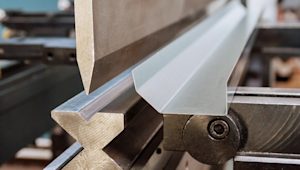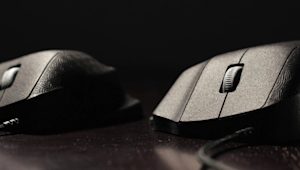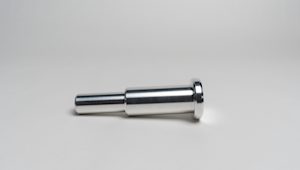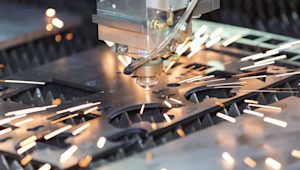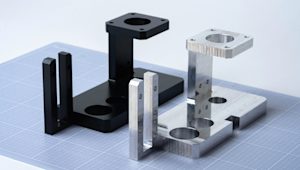Protolabs Network connects you to thousands of manufacturers around the globe through a process called “decentralized manufacturing.” So what is it, why is this beneficial, and how can you take full advantage of the process when creating your parts? In this article, we’ll explore all of this and more.
What is decentralized manufacturing?
Decentralized manufacturing refers to a manufacturing process that is distributed across multiple locations rather than a single factory or production facility. With decentralized manufacturing, the design, creation, assembly, and testing of products might take place in different places.
Characteristics of decentralized manufacturing
In addition to geographical distribution, decentralized manufacturing is identifiable by several characteristics. Here are a few of the major ones.
-
On-demand manufacturing. Decentralized manufacturing is “on-demand” – meaning you only create what you need, when you need it. That’s why it is predominantly used for prototyping and small-batch production with the opportunity to expand.
-
Networked facilities. The places at which manufacturing occurs in decentralized manufacturing – meaning they are connected with one another throughout the entire manufacturing process, either through conventional forms of communication or with IoT-enabled devices.
-
Collaborative Suppliers, manufacturers, and customers often work directly and closely with each other through the decentralized manufacturing process. For example, Protolabs Network connects customers with manufacturers around the globe.
-
Innovative technologies. Decentralized manufacturing heavily relies on smart factories, value chain management, and product lifecycles – together known as “digital manufacturing”. This also includes technology such as digital twins, CAD software, 3D printing, robotics, and automation.
The advantages of decentralized manufacturing
Implemented correctly, decentralized manufacturing can bring a number of benefits to your organization. Let’s take a look.
-
Reduced costs. By working with a network of different manufacturers, you can easily access those that are the best fit for your needs – and your budget. Our algorithm automatically matches your project with a manufacturer that can produce it, giving you a competitive price out of millions. And by creating what you need, when you need it, you’re saving on transport and storage (warehousing) costs.
-
Risk mitigation. With decentralized manufacturing, you can spread your manufacturing efforts across multiple locations. This will greatly reduce the impact of disruptions to the supply chain that may occur, as you will have a diversified roster of suppliers and manufacturing partners.
-
Agile production. You can respond quickly to fluctuations in demand or market conditions. This agility will also allow you to work with minimal inventory – creating what you need, when you need it – saving valuable warehouse space.
-
Localized production. Decentralized manufacturing enables you to have parts manufactured in factories that are close to your key markets or customers, reducing shipping costs and transport times. We offer local manufacturing options for CNC machining.
-
Customization and flexibility. If you are producing customized products – especially those that only necessitate small-batch production – decentralized manufacturing may be a better fit than centralized manufacturing, as it allows for greater flexibility in both part design and order quantity.
-
Sustainability. Because decentralized manufacturing helps optimize the supply chain for any given project, waste, energy consumption, and carbon emissions are often less than that resulting from traditional forms of manufacturing.
How to take advantage of decentralized manufacturing
To fully take advantage of decentralized manufacturing, you will need a strategy to implement it in your business operations. Below are a few steps that we advise our customers to take as they enter the world of decentralized manufacturing.
Evaluate your product and market. Are you looking to create batches of products as you need them? Is your market a niche market? Do your parts need to be very specific or otherwise customized? If you answered yes to all of the above, decentralized manufacturing may be a good choice for you.
-
Invest in digital technologies. If you aren’t already, begin to roll out technology such as IoT-enabled devices, cloud computing and artificial intelligence. These will help you better communicate, collaborate, and improve upon production processes in decentralized manufacturing.
-
Strategically select manufacturing locations. Consider the benefits of local and global manufacturing locations. Also, be sure to balance cost considerations with efficiency gains. For example, it may be more expensive to create a part that arrives in a single unit rather than one that is assembled. However, the time it takes you to assemble that part may counteract its lower cost.
-
Risk management. Develop a comprehensive risk management plan to address potential challenges associated with decentralized manufacturing, such as supply chain disruptions or geopolitical issues. Working with a supplier such as Protolabs Network removes this risk factor for you. Here’s how we manage our global network.
-
Supply chain management. With strong supply chain management strategies, you can ensure a smooth flow of materials and information across decentralized locations. You should also use technology for real-time tracking and visibility – something that services like Protolabs Network have built-in.
Challenges in decentralized manufacturing
In many cases, decentralized manufacturing’s benefits outweigh its disadvantages. Even so, it’s important to be aware of some of the challenges you may face when operating under a decentralized manufacturing process.
-
Legal and regulatory. Because you may be using manufacturers in different countries, it’s important to stay up to date with the different legal and regulatory requirements with which you’ll need to comply. Here, you must work with both legal experts and regulatory bodies to ensure that you and your parts remain compliant and operational.
-
Quality and safety. Decentralized manufacturing may require you to be less “hands on” than with traditional manufacturing methods. As such, it’s important that you implement procedures and protocols for traceability, real-time monitoring, and quality assurance – all of which will result in safer and higher-quality parts.
-
Compatibility. The use of new technologies may result in disparity between different locations, or even amongst your own teams. By ensuring that you have standardized methods of both communicating and working, you can overcome them.
Protolabs Network’s distributed manufacturing model handles these considerations on your behalf. Find out more about how we ensure quality no matter where your parts are produced.
Start a manufacturing project
Get a quote for CNC machined, 3D printed or injection molded parts. Simply upload a CAD file and select the price and lead time that fits your schedule.
You can also read more about product development including explanations on transitioning from prototyping to higher-volume production runs.
Frequently asked questions
Why should you choose decentralized manufacturing?
You can improve your organization’s agility, risk mitigation, and produce parts more efficiently.
How does decentralized manufacturing impact quality control?
Through real-time monitoring, traceability, and adherence to industry standards. Certification bodies and standardized protocols contribute to product integrity.
How does decentralized manufacturing contribute to sustainability?
Decentralized manufacturing reduces transportation-related emissions and minimizes waste, because you can create what you need, when you need it.
Can traditional manufacturers transition to decentralized manufacturing?
By embracing digital transformation, upgrading infrastructure, and fostering collaborations within decentralized networks.
Is decentralized manufacturing suitable for all industries?
Industries such as automotive, aerospace, electronics, and healthcare have all found success using Protolabs Network.









